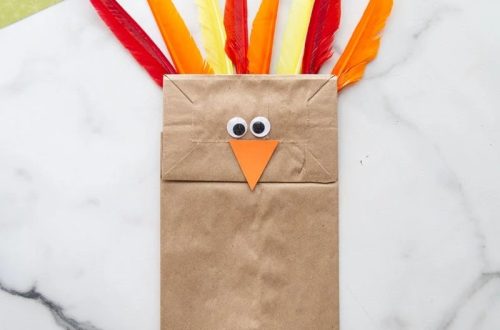Part 1: Understanding the Basics
The Rubik’s Cube, invented in 1974 by Ernő Rubik, is a challenging puzzle that has captivated millions of people around the world. The standard 3×3 Rubik’s Cube consists of six faces, each adorned with nine stickers of six solid colors. The goal is to twist and turn the cube in such a way that each face is comprised of a single, solid color. While the task may seem daunting at first, with the right approach and methodical steps, solving the Rubik’s Cube can be a rewarding and enjoyable experience.

1. Familiarize Yourself with the Cube
Before diving into solving the Rubik’s Cube, take some time to familiarize yourself with its structure. Understanding the layout of the cube and how it moves will play a critical role in the solving process. Pay close attention to the color scheme and note the center squares of each face, as they do not move and serve as a reference point for the rest of the cube.
2. Learn the Notation
To effectively communicate and document the moves made during the solving process, it’s essential to learn the standard notation used for the Rubik’s Cube. The six faces of the cube are denoted by the letters F (front), B (back), U (up), D (down), L (left), and R (right). Additionally, the moves are modified with notation symbols: a single letter indicates a clockwise rotation of the designated face, while an apostrophe (‘) denotes a counterclockwise movement. Finally, a 180-degree turn is represented by adding the number 2 after the letter.
Part 2: Solving the First Layer
The first step in solving the Rubik’s Cube is to solve the first layer. This not only provides a solid foundation for the rest of the solving process but also familiarizes the solver with fundamental techniques.

1. Solve the Cross
When initiating the Rubik’s Cube solving process, it’s essential to designate a specific color as the “cross” color and subsequently identify the edge pieces adorned with this chosen color. Position these edge pieces correctly within the middle layer to form a cross. Precision is key at this stage. It requires each edge piece to be meticulously aligned with the center square of the corresponding face. This alignment ensures that the edge pieces are in their rightful places and that their side colors match the adjacent center squares. It’s crucial to execute this step with accuracy. It serves as the foundational framework for solving the remainder of the first layer of the Rubik’s Cube. Ultimately, it sets the stage for the subsequent stages in the solving sequence.
2. Complete the First Layer Corners
After forming the cross, focus on placing the corner pieces in their correct positions to complete the first layer. By manipulating the cube’s orientation and utilizing various algorithms, position the corner pieces to match their designated faces. This involves shifting pieces around without disturbing the cross formation, allowing for a smooth transition to the next step in the solving process.
Part 3: Progressing to the Second Layer
With the first layer successfully completed, attention turns towards solving the second layer of the Rubik’s Cube. This stage introduces new techniques and challenges, requiring a systematic approach.

1. Position and Align the Second Layer Edge Pieces
Achieving the second layer on a Rubik’s Cube involves careful placement and alignment of the edge pieces within the middle layer. Utilizing strategic moves and algorithms is the objective. The goal is to manipulate the cube’s arrangement to fit the edge pieces in their designated spots. It’s crucial to ensure that the side colors of these edge pieces match the adjacent center squares. This alignment is essential to progress through the solving process. The precision and methodical placement of these edge pieces are crucial for setting the stage for the subsequent steps in solving the Rubik’s Cube 3×3.
2. Complete the Second Layer Corners
After arranging the edge pieces for the second layer of the Rubik’s Cube, the focus shifts to positioning the corner pieces to complete this layer. Specific strategic moves and algorithms are utilized for the correct placement of the corner pieces. This process is similar to the one used for the first layer corners. Careful execution of these methods, characterized by precision and patience, enables the corner pieces to fall into their designated places within the second layer. This step ensures the completion of the second layer of the Rubik’s Cube. It also lays the groundwork for progressing to the final layer. Successfully aligning the corner pieces is instrumental in bringing the solving process one step closer to its culmination. This represents an essential milestone in mastering the Rubik’s Cube 3×3.

Part 4: Solving the Final Layer
The final layer of the Rubik’s Cube can be the most challenging, requiring a combination of algorithms and problem-solving skills to bring the puzzle to its completion.
1. Orient the Final Layer Edges
In addressing the final layer of the Rubik’s Cube, the initial focus is on orienting the edge pieces. This step uses a specific algorithm to systematically rearrange the edges so that their colors harmoniously align with their respective faces. Achieving this alignment may require executing the algorithm multiple times to ensure that all the edge pieces are accurately oriented. This particular step involves a careful and methodical approach. The correct orientation of the edge pieces is vital for paving the way toward effectively positioning the final layer’s corner pieces. By adhering to these strategic methods, enthusiasts can incrementally progress through the solving process. They can work towards successfully completing the challenging final layer of the Rubik’s Cube 3×3.
2. Position the Final Layer Corners

The last step in solving the Rubik’s Cube involves positioning the final layer’s corner pieces. A unique set of algorithms systematically moves corner pieces into their correct location while maintaining the proper alignment of the colors. Following a methodical approach and being mindful of the cube’s arrangement allows for successfully arranging the final layer corners. This ultimately solves the Rubik’s Cube.
In conclusion, solving the Rubik’s Cube is a feat that requires patience, practice, and a systematic approach. By understanding the basic structure of the cube, enthusiasts can conquer this iconic puzzle. They can do this by learning the necessary notation and by following a step-by-step guide to solving each layer. This allows them to experience the satisfaction of unraveling its intricate patterns. With dedication and perseverance, mastering the Rubik’s Cube 3×3 becomes an achievable and immensely rewarding endeavor.


